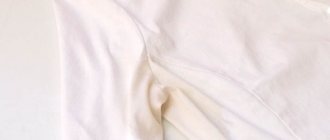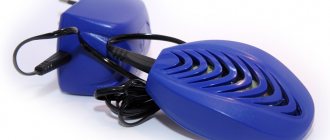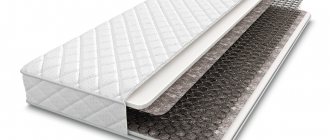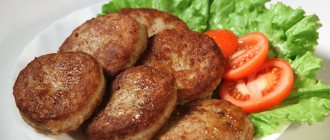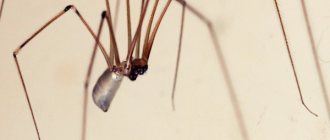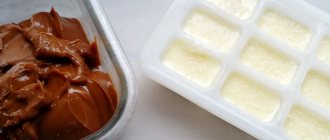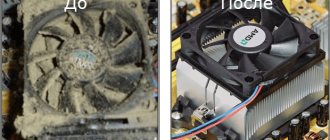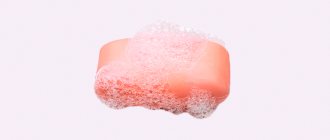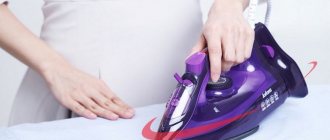The pacifier helps the baby fall asleep, calms the baby and completely satisfies the sucking reflex. In addition, a bottle with a nipple makes it easy for your baby to get formula or breast milk. It is important to choose and use a pacifier correctly and care for the product. The health and safety of the baby depends on this. Caring for your pacifier includes regular washing, sterilization and replacement. In this article, we'll look at how often to change your bottle nipple or pacifier. Let's learn how to choose the right product and how to care for it.
Nipples
The shape of the “classic”, round nipple follows the shape of the nipple of the mammary gland during breastfeeding, which allows you to bring the feeding process as close as possible to natural.
Orthodontic nipples, due to their structure, prevent the swallowing of air and promote the proper development of the palate and lower jaw.
Today there are new nipples on the market with an anti-vacuum system, the main element of which is the valve. This device, firstly, reduces the volume of air swallowed during sucking, significantly reducing the frequency of regurgitation, and secondly, it prevents the nipple from sticking together, allowing the baby not to tear himself away from the bottle during feeding.
All nipples vary in the number of holes. For babies from birth to 2-3 months, nipples with one or two holes are suitable. Nipples with three holes (medium flow) are intended for babies 2-5 months. Four hole nipples (fast flow) are designed for babies over 4 months of age. Nipples also differ in the shape of the holes: x-shaped for juices, y-shaped for liquid cereals, etc.
Which bottle will be the best?
Having studied all the features, characteristics and varieties, parents go to the store or pharmacy and try to figure out which is the best. But theory doesn't always work the way we want it to. If possible, it is better to first buy 2 small different ones and try using them at home. Even a few days of feeding the baby will show which one is more convenient, easier to clean and more often used. Then you can buy two more pieces of the model you like. The best bottle is the one that fits the baby perfectly, allows the formula to flow well, prevents air from entering the stomach, and is easy to maintain.
What are the best bottles for newborns? The answer is simple - those that suit your baby perfectly.
Thus, choosing a bottle is an important and responsible process that may seem complex and problematic. Choosing the right option from the wide variety of products on offer is not an easy task. For the best result, it is worth studying the characteristics and features of various parameters of the product, deciding which of them are most important and relevant for specific parents and their babies. When purchasing, you should trust reliable, well-known manufacturing companies.
How to choose a pacifier?
Many nipples now use new laser hole-punching technology. When receiving food from such a nipple, the child puts in no less effort than when sucking at the breast. In addition, the edges of the holes are perfectly smooth, food passes through without difficulty and a uniform flow rate is maintained.
When choosing a pacifier, experts recommend that parents pay attention to where exactly the holes or cuts are located. It is more correct if the holes or incision are located not in the middle (then the liquid pours into the child’s throat), but slightly higher (then the flow of liquid is directed to the sky, the child does not choke, and the food mixes with saliva).
Material of manufacture
Today, the most common materials from which baby bottles are made are plastic and glass. Both have many benefits, so the choice is up to parents. It is worth considering that plastic is lighter, safer, easy to clean and can be of any shape, even curved. Its only disadvantage is the appearance of microcracks during constant sterilization, which leads to clouding of the plastic.
A glass bottle is sterilized much more efficiently and lasts longer, but it is noticeably heavier than a plastic bottle and can be dangerous if it accidentally breaks. Despite this, many parents continue to use glass ones due to the environmental friendliness of the material. After all, when buying plastic, it is important to find a high-quality product from a reliable manufacturer that is not harmful to the child.
Well-known pediatrician Evgeny Komarovsky claims that sterilizing bottles for a newborn is an unnecessary process. He puts it this way: “From a medical point of view, sterility is contraindicated for a child... A child needs cleanliness. Any children's dishes should be washed intensively in running water. And if a detergent is used, it is important to ensure that all traces of it are thoroughly removed.”
Pacifiers
In some cases, the use of a pacifier is not only desirable, but also necessary. It is justified to use a pacifier in a baby with a strong sucking reflex, as well as in children with increased excitability - sucking a pacifier calms them down. Additionally, sucking a pacifier is better than thumb sucking, which can cause jaw deformation and malocclusion.
There is also an opinion that sucking a pacifier helps with flatulence (excessive accumulation of gases in the intestines). The pacifier stimulates the intestines, which helps eliminate accumulated gases.
Form
In addition to the usual straight cylindrical bottles, you can purchase a variety of curved options, which are positioned by manufacturers as anti-colic. Their shape allows the mixture to be distributed when consumed by the baby and minimize the likelihood of air getting into the baby’s tummy. They are made of plastic and look nice, but such bottles are difficult to wash.
A variety of cylindrical bottles can be widened at the bottom or concave in the middle for ease of holding in the hand. Such nuances are important for older children who are trying to hold a bottle in their hands. For a child, the optimal shape remains a straight design, which is convenient to hold and wash.
How to choose a pacifier?
Pacifiers come in round and orthodontic shapes. In addition, some companies produce drop-shaped pacifiers for babies (0-3 months).
The size of the pacifier varies depending on age: most often it is 0-3 months, 3-6 months. and 6-12 months.
The shield - the base of the pacifier - should be wide enough to prevent accidental swallowing of the pacifier; have a cutout for the spout and ventilation holes near the base of the nipple to prevent diaper rash. It is better if the pacifier is made from a single piece of latex or silicone. Then the baby will not be able to take it apart and choke on small parts, or get hurt in his sleep.
Currently, three materials are used to make pacifiers and pacifiers: rubber, silicone and latex. Rubber nipples are gradually becoming a thing of the past.
Silicone nipples are tighter and less susceptible to deformation. Silicone is more durable than latex. Silicone nipples are recommended to be used only before the child has his first teeth.
Latex is softer than silicone. After the child’s teeth appear, it is recommended to switch to a soft latex pacifier, which has less impact on tooth growth. Unlike silicone, cases of allergic reactions have been reported with latex.
Latex nipples need to be changed once every 2-3 weeks, and silicone nipples once every 4-5 weeks, even if there is no damage to the nipples. A damaged pacifier made of any material must be replaced immediately, because a piece that comes off from it can get into the baby's respiratory tract.
To prevent the pacifier from getting lost, it can be hung on a chain with a special clip. Some parents put a string with a pacifier around the child's neck. Under no circumstances should you do this: it can lead to suffocation.
Acceptable age
You can start using a pacifier immediately after birth only in exceptional cases - if artificial feeding begins immediately after birth and the baby cannot be calmed down even with skin-to-skin contact. If a caesarean section was performed, the medical staff does not give the baby a pacifier so that breastfeeding can be established as quickly as possible after the baby is returned to the mother.
If a woman is planning a natural birth and breastfeeding, she should not plan to use a pacifier and take it with her to the hospital.
In 2005, a study was conducted in Poland “Factors affecting exclusive breastfeeding in Poland: cross-sectional survey of population-based samples.” As a result, two consecutive surveys were conducted to identify factors negatively affecting breastfeeding. One of these factors was the use of a pacifier, including in the early postpartum period.
According to the Brazilian study “Breastfeeding-Friendly Primary Care Unit Initiative and the relationship with exclusive breastfeeding,” conducted in 2013 and published on the International Library of Medicine website, pacifier use is the leading factor in breast refusal in newborns, ahead of even cesarean section and low breastfeeding. maternal education.
How to part with a pacifier?
You should start weaning your child off the pacifier from the age of six months, when his first teeth appear. By one and a half to two years, the child’s sucking reflex completely fades away.
What can be done to ensure that problems with using a pacifier do not arise? Up to 2-3 months, a pacifier can be offered to a child only in the most extreme cases: if the baby is very excited, overtired, or if his sucking reflex is too strong. You should not offer a pacifier to your baby when he is not fussing.
Additional accessories and features
Once the basic parameters are taken into account and selected, you can think about additional features of feeding bottles. A bottle cap is now a mandatory attribute of any product. In addition to it, some manufacturers offer a removable handle that can be put on the bottle when the baby learns to hold it in his hands.
Often, a cleaning brush is also sold along with the bottle, especially if it is curved. Purchasing such a set will make the task of washing and care easier.
Additionally, you can also choose a special handbag or case that will allow you to take food with you on a walk or on a trip. The thermal bag will allow you to maintain the desired temperature of the mixture for a long time.
Sources
- Rodrigues GPN., Oliveira MIC., Boccolini CS., Sally EOF., Moraes JR. . // Cad Saude Publica - 2022 - Vol37 - N4 - p.e00129919; PMID:33886708
- Ducharme-Smith K., Gross SM., Resnik A., Rosenblum N., Dillaway C., Orta Aleman D., Augustyn M., Silbert-Flagg J., Caulfield LE. Exposure to Baby-Friendly Hospital Practices and Breastfeeding Outcomes of WIC Participants in Maryland. // J Hum Lact - 2022 - Vol - NNULL - p.890334421993771; PMID:33591853
- Miranda C., de Sousa TM., do Carmo AS., Pereira SCL., Notaro KAM., Dos Santos LC. Use of Artificial Nipples Among Brazilian Infants and Associated Factors. // J Trop Pediatr - 2022 - Vol66 - N5 - p.511-516; PMID:32049350
- Silva KBD., Oliveira MIC., Boccolini CS., Sally EOF. Illegal commercial promotion of products competing with breastfeeding. // Rev Saude Publica - 2022 - Vol54 - NNULL - p.10; PMID:32022139
- Kivlighan KT., Murray-Krezan C., Schwartz T., Shuster G., Cox K. Improved breastfeeding duration with Baby Friendly Hospital Initiative implementation in a diverse and underserved population. // Birth - 2022 - Vol47 - N1 - p.135-143; PMID:31788842
- Batista CLC., Rodrigues VP., Ribeiro VS., Nascimento MDSB. Nutritive and non-nutritive sucking patterns associated with pacifier use and bottle-feeding in full-term infants. // Early Hum Dev - 2022 - Vol132 - NNULL - p.18-23; PMID:30928831
- Zimmerman E. Pacifier and bottle nipples: the targets for poor breastfeeding outcomes. // J Pediatr (Rio J) - 2022 - Vol94 - N6 - p.571-573; PMID:29452072
- Batista CLC., Ribeiro VS., Nascimento MDDSB., Rodrigues VP. Association between pacifier use and bottle-feeding and unfavorable behaviors during breastfeeding. // J Pediatr (Rio J) - 2022 - Vol94 - N6 - p.596-601; PMID:29136496
- von der Gathen Y., Sander I., Flagge A., Brüning T., Raulf-Heimsoth M. Quantification of protein and latex allergen content of various natural rubber latex products. // Allergol Select - 2022 - Vol1 - N2 - p.109-119; PMID:30402609
- Jaafar SH., Ho JJ., Jahanfar S., Angolkar M. Effect of restricted pacifier use in breastfeeding term infants for increasing duration of breastfeeding. // Cochrane Database Syst Rev - 2016 - Vol - N8 - p.CD007202; PMID:27572944

